Comics have long held a special place in the realm of pop culture.
In the always evolving landscape of popular culture, one artistic medium has consistently displayed an uncanny ability to transcend its ink-and-paper origins, leaping off the pages and into the hearts and minds of audiences around the world.
Comics, with their colorful heroes, vivid villains, and thought-provoking narratives, have emerged as a cultural superpower, leaving an indelible mark on society’s collective imagination.
From the birth of the superhero genre in the Golden Age of Comics to the blockbuster reign of cinematic universes and the subversive brilliance of graphic novels, the influence of comics on pop culture is both undeniable and deeply woven into the fabric of our modern world.
Comics have played an indispensable role in shaping popular culture throughout the 20th and 21st centuries.
These vibrant and visually captivating storytelling mediums have transcended their humble origins to become a driving force behind the entertainment industry, influencing everything from literature and film to fashion and politics.
The Birth of Comics
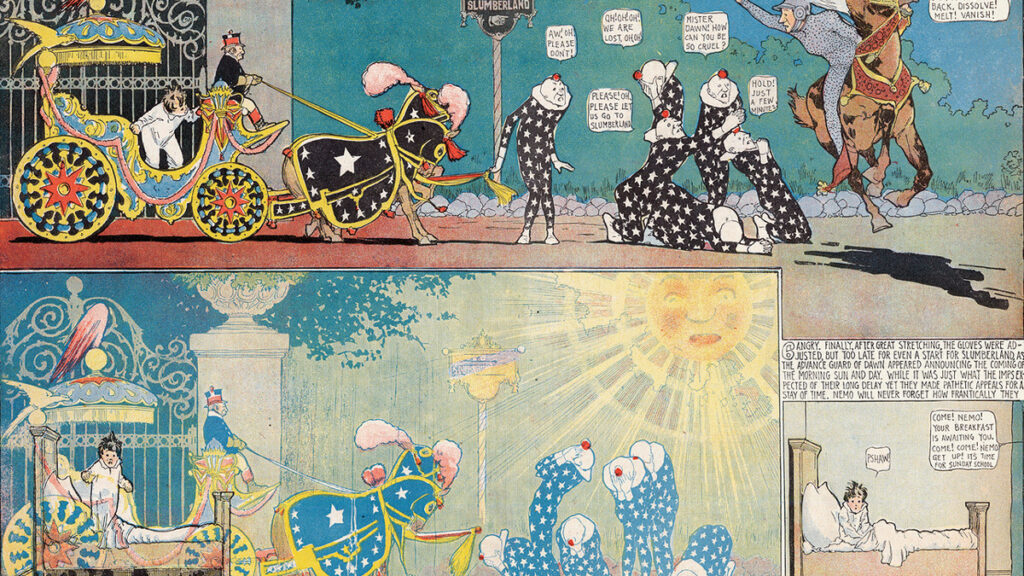
Comics, as we know them, trace their origins back to the late 19th century when illustrated humor and satirical magazines like Punch and Harper’s Weekly were immensely popular.
These early publications paved the way for comic strips, which featured recurring characters and storylines.
Notable examples include The Yellow Kid by Richard F. Outcault and Little Nemo in Slumberland by Winsor McCay.
The late 1930s and early 1940s marked the birth of the superhero genre, a defining moment in comic book history.
Iconic characters like Superman, Batman, and Wonder Woman made their debut during this period, captivating the imaginations of readers and laying the foundation for the modern comic book industry.
These superheroes served as symbols of hope and resilience during a tumultuous time in American history, providing readers with an escape from the harsh realities of the Great Depression and World War II.
Comics as a Cultural Mirror
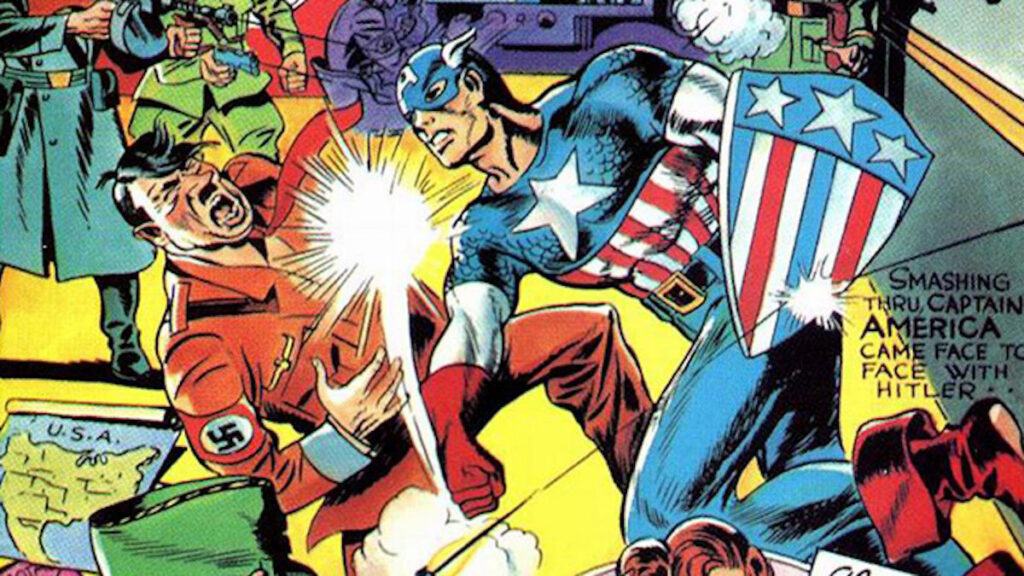
Comics often serve as a reflection of the times in which they are created, providing insights into societal concerns, fears, and aspirations.
World War II: Comics Join the War Effort
World War II marked a pivotal moment in the history of comics, as they emerged as powerful propaganda tools that played a significant role in shaping public opinion and rallying support for the war effort.
One of the most iconic characters to emerge during this period was Captain America, created by Joe Simon and Jack Kirby in 1941.
Captain America’s introduction was nothing short of a cultural phenomenon, as he boldly stepped onto the comic book pages to confront Nazi villains and their allies.
This patriotic superhero embodied the very ideals that America held dear during the war: freedom, justice, and unity.
Captain America’s adventures were more than just entertaining comic book stories; they were a reflection of the national mood and a call to arms.
The character became a symbol of American resilience and determination, a beacon of hope in a tumultuous time.
His vivid portrayal in comics helped boost morale among soldiers overseas and instilled a sense of pride and duty in those on the home front.
Readers of all ages found solace in the pages of these comics, knowing that, even in a fictional world, good would ultimately triumph over evil.
Captain America’s shield, adorned with the stars and stripes, was a powerful emblem of American strength and unity that resonated with readers and served as a reminder of the values they were defending.
Beyond Captain America, numerous other comic book characters and series were employed as propaganda tools during World War II.
Superman, Batman, and Wonder Woman, among others, also took part in the war effort, using their unique abilities to combat the Axis powers.
Comics featured dramatic images of superheroes defeating Nazi spies, foiling enemy plans, and promoting bonds and war stamps.
These narratives not only entertained but also reinforced the importance of patriotism, sacrifice, and collective action.
Comics transcended their status as mere entertainment and became a vital medium for communicating the national narrative and fostering a sense of purpose and unity during a time of great global upheaval.
The 60s: Comics Influence the Civil Rights Movement
Comics have frequently been at the forefront of societal change, addressing pressing issues and challenging prevailing norms.
Throughout their history, they have played a pivotal role in advocating for civil rights, gender equality, and diversity.
During the 1960s, when the Civil Rights Movement was in full swing, Marvel Comics introduced the X-Men, a team of mutants who faced discrimination and prejudice because of their unique abilities.

The X-Men, a team of mutants with unique superhuman abilities, faced discrimination and prejudice from a society that feared and misunderstood them.
This narrative device, created by writer Stan Lee and artist Jack Kirby, provided a poignant allegory for the struggles of marginalized communities, particularly African Americans, who were battling racial segregation and discrimination during the same era.
The X-Men’s experiences mirrored the real-life challenges of those seeking equality and justice, making the characters and their stories deeply relatable to readers.
The X-Men comics served as a platform to address issues of racial and social injustice in a way that resonated with a broad audience.
They highlighted the importance of tolerance, acceptance, and understanding, emphasizing that differences should be celebrated rather than vilified.
By portraying the X-Men as heroes fighting for a world where mutants and humans could coexist peacefully, these comics encouraged readers to reflect on their own biases and prejudices, ultimately promoting a message of unity and social change.
The impact of the X-Men comics extended beyond their pages.
They contributed to a broader cultural conversation about civil rights and social justice, helping to shape public opinion and foster empathy and support for marginalized communities.
Comics have been at the forefront of civil rights discussions. Works like March by Congressman John Lewis, Andrew Aydin, and Nate Powell provide a graphic account of the American Civil Rights Movement.
The Cold War and Comics
The Cold War era, characterized by intense geopolitical tensions between the United States and the Soviet Union, left an indelible mark on popular culture, including the world of comics.
During this period, comics frequently served as a reflection of the prevailing fear of nuclear conflict and the perceived threat of communism.
Comics: Reflecting the Times
Classic comic book stories such as “The Fantastic Four” and “The Incredible Hulk” emerged as prime examples of how the medium encapsulated the anxieties of the era.
The Fantastic Four, created by Lee and Kirby in 1961, featured a group of superheroes who gained their extraordinary powers as a result of a space mission gone awry.
Their origin story, involving cosmic radiation, reflected the scientific experimentation that was a common theme in the 1950s and early 1960s comics.
This theme mirrored the broader societal concerns about the potential consequences of unchecked scientific advancement, particularly in the realm of nuclear technology.
The Fantastic Four’s adventures often featured them combating larger-than-life threats, and their stories subtly alluded to the Cold War tensions and the fear of uncontrollable powers.

The Incredible Hulk, created in 1962 by Lee and Kirby, told the story of Dr. Bruce Banner, a scientist exposed to gamma radiation, which transformed him into the rampaging Hulk whenever he experienced intense anger or stress.
The Hulk’s uncontrollable transformation and the destructive potential of his alter ego mirrored the fears of a world teetering on the brink of nuclear conflict.
Banner’s struggle to control the Hulk was a metaphor for the struggle to contain the destructive forces of the atomic age, serving as a reflection of Cold War-era anxieties about the consequences of scientific experimentation and the potential for uncontrollable power.
Post-9/11: Comics Bring Hope and Resilience
In the aftermath of the tragic 9/11 attacks, comics played a significant role in providing a source of hope and resilience for a nation in mourning.
The impact of the attacks was profound, and the entire country was searching for ways to heal and find solace amidst the devastation.
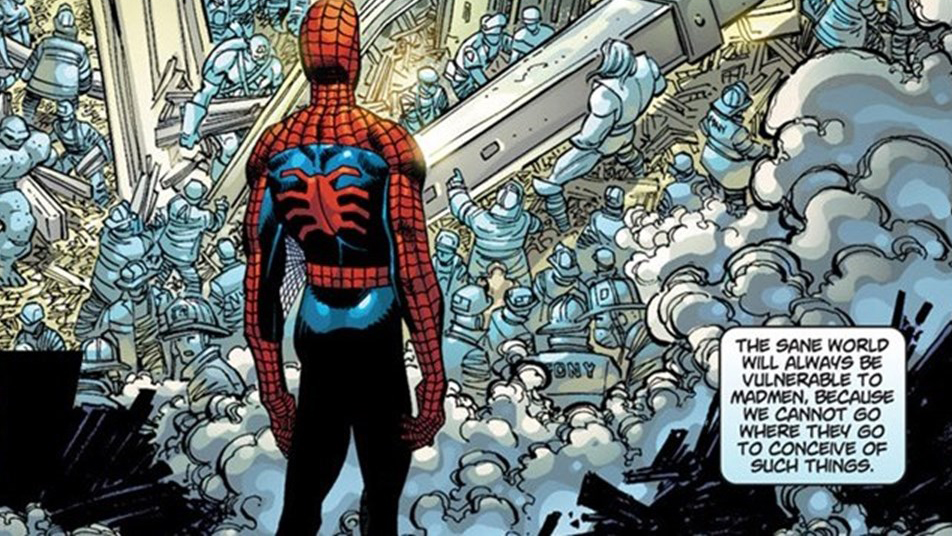
During this difficult period, characters like Spider-Man emerged as symbols of strength and perseverance, resonating with the American people in their time of need.
Spider-Man, created by Lee and Ditko, has always been a character who grappled with personal tragedies while continuing to strive for what is right.
His alter ego, Peter Parker, is the quintessential “everyman” superhero, juggling the challenges of everyday life while using his incredible powers to protect his city.
This relatability made Spider-Man particularly poignant in the wake of the 9/11 attacks.
Many readers could identify with his struggles and his determination to use his abilities for the greater good, even in the face of adversity.
Comics featuring Spider-Man and other iconic characters provided an escape from the harsh realities of the post-9/11 world, offering readers a sense of normalcy and inspiration.
These stories served as a reminder that, even in the darkest of times, there were individuals and heroes who would stand up against evil and continue to do what is right.
Spider-Man’s enduring message of responsibility and resilience resonated with a nation in grief, offering a glimmer of hope and a testament to the indomitable human spirit.
Comics Enter the Gender Debate
Comics have also played a significant role in breaking gender stereotypes.
Wonder Woman, created by William Moulton Marston in 1941, emerged as a groundbreaking character during a time when traditional gender roles were deeply ingrained in society.
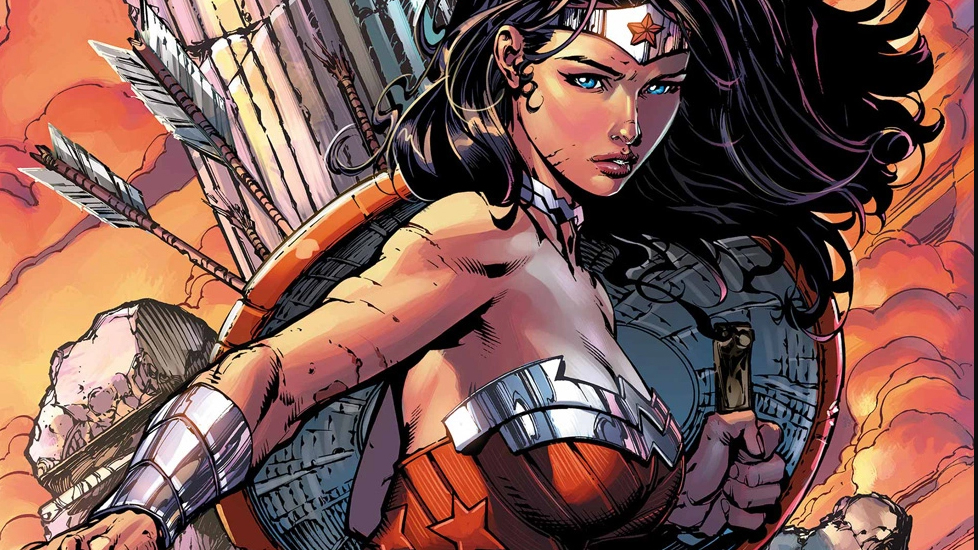
She was a powerful Amazonian warrior with unyielding strength, intelligence, and a strong moral compass.
Wonder Woman challenged the prevailing stereotypes of women as damsels in distress, proving that women could be fierce and capable heroes in their own right.
Her creation and enduring popularity inspired generations of women and girls to embrace their strength and independence, transcending societal expectations and paving the way for greater gender equality in both fiction and reality.
Similarly, Captain Marvel, whose character has evolved over time, has been a symbol of empowerment and resilience.
Characters like Carol Danvers, who took on the mantle of Captain Marvel, demonstrated that women could excel in traditionally male-dominated spaces, including the military and superhero realms.
Her journey from a skilled Air Force pilot to a cosmic-powered hero broke the mold of gender expectations and showcased the potential for women to be leaders and warriors on equal footing with their male counterparts.
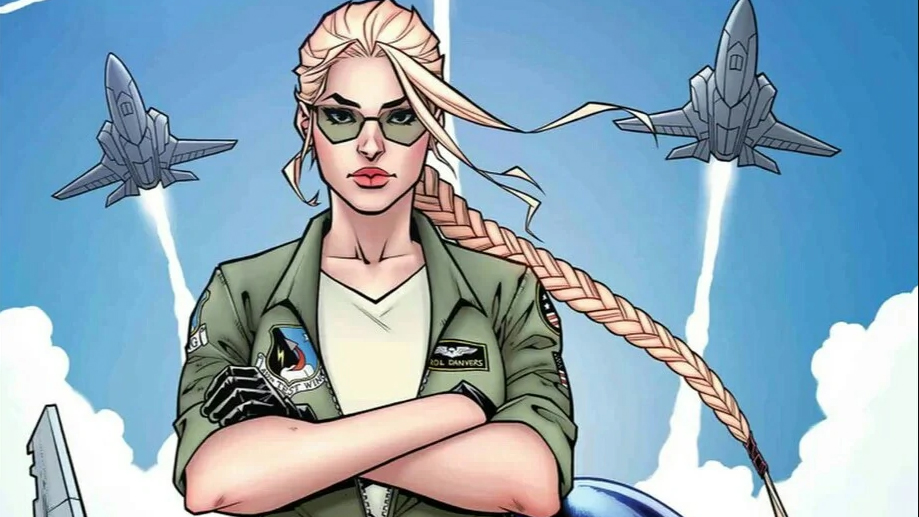
These strong, independent female characters in comics have not only shattered stereotypes but also inspired countless individuals, regardless of gender, to pursue their dreams, challenge societal norms, and embrace their own strengths and potential.
These characters inspired generations of women and girls to pursue their dreams and challenge societal expectations.
Recent Years: Comics and LGBTQ
In recent years, the comic book industry has made significant strides in LGBTQ+ representation.
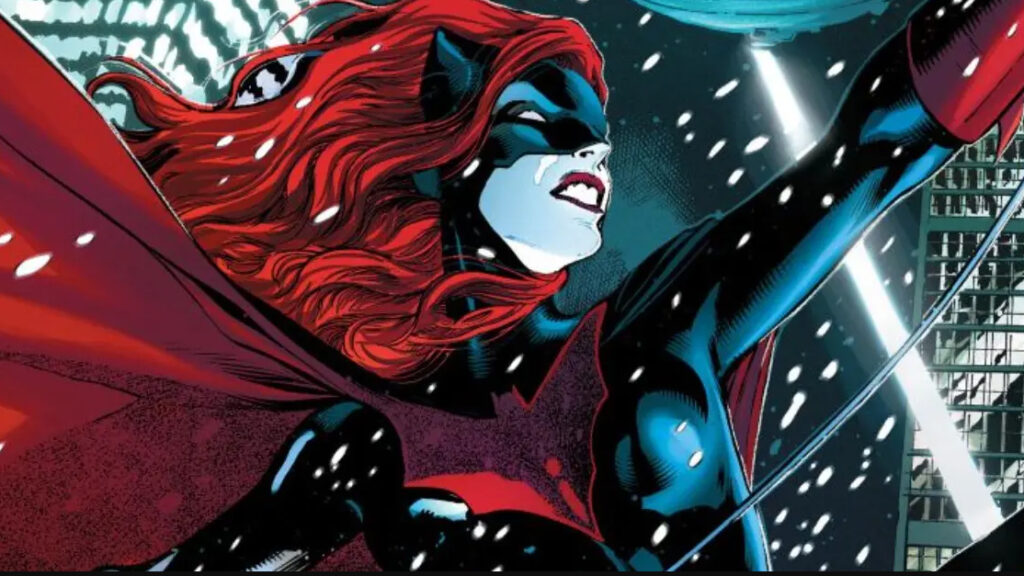
One notable development has been the introduction of LGBTQ+ characters as well-rounded, central figures in major comic book series.
Established superheroes like Batwoman, Northstar, and Iceman have come out as LGBTQ+ individuals, allowing readers to see themselves in characters who were previously portrayed as heterosexual.
These revelations have not only affirmed the existence of LGBTQ+ individuals within the superhero universe but also acknowledged the significance of their stories.
The push for LGBTQ+ representation in comics is not just about reflecting the real world, but also about sending a powerful message of acceptance and support to readers of all backgrounds.
It fosters a sense of belonging, encourages empathy, and contributes to the broader movement for LGBTQ+ rights and visibility.
Independent comics, in particular, have played a pivotal role in bringing LGBTQ+ themes to the forefront, shedding light on the experiences and challenges faced by this community.
Works such as Fun Home by Alison Bechdel and Blue Is the Warmest Color by Julie Maroh have emerged as powerful and poignant narratives that have contributed to greater awareness and acceptance of LGBTQ+ issues.
These independent comics have not only expanded the representation of LGBTQ+ characters but have also fostered greater understanding and empathy among readers from all walks of life.
They have played a significant role in breaking down stereotypes and challenging societal norms, contributing to the broader movement for LGBTQ+ rights and acceptance. As the comic book industry continues to evolve, these works serve as a testament to the power of storytelling in
Comics in Literature
Comics played a crucial role in shaping the literary landscape.
The worlds of literature and comics may seem like two distinct realms of storytelling, but a closer examination reveals an intertwined relationship.
Comics, with their striking visuals and succinct narratives, have made an indelible mark on the landscape of literature.
Over the years, comics have transcended their origins as mere entertainment and have become influential works of art and literature in their own right.
After all, one cannot discuss pop culture without mentioning iconic characters like Superman, Batman, and Spider-Man, all of whom originated in comic books.
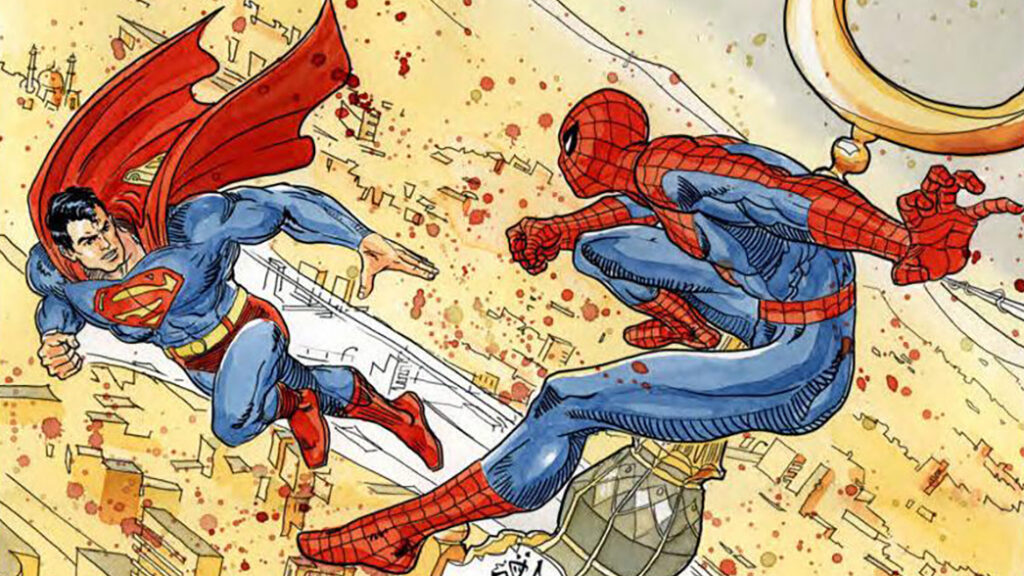
These characters transcended their comic book origins to become literary icons with complex narratives, reflecting societal issues and moral dilemmas.
Comic books have also inspired a generation of writers.
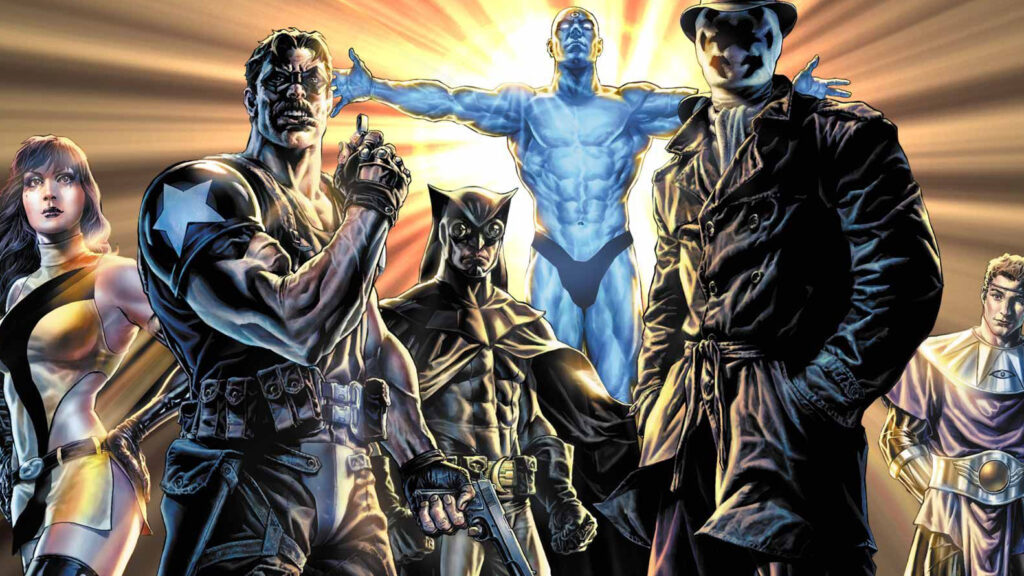
Graphic novels like Alan Moore’s Watchmen, Frank Miller’s The Dark Knight Returns and Art Spiegelman’s Maus have transcended the boundaries of traditional comics to be considered literary masterpieces.
These graphic novels tackle complex themes such as the Holocaust and the moral ambiguities of superheroism, demonstrating that comics can be a powerful medium for exploring profound ideas.
These works have been studied in academia and contributed to the legitimization of comics as a literary form.
Comics have also made a significant impact in the world of literature through adaptations.
Many classic literary works have been reimagined as graphic novels, introducing these timeless stories to a new generation of readers.
The works of William Shakespeare have been adapted into graphic novels, making the Bard’s plays more accessible and engaging.
Graphic adaptations of Hamlet, Macbeth, and Romeo and Juliet preserve the beauty of the original language while adding a visual dimension to the storytelling.
Comics have also breathed new life into classic literature.
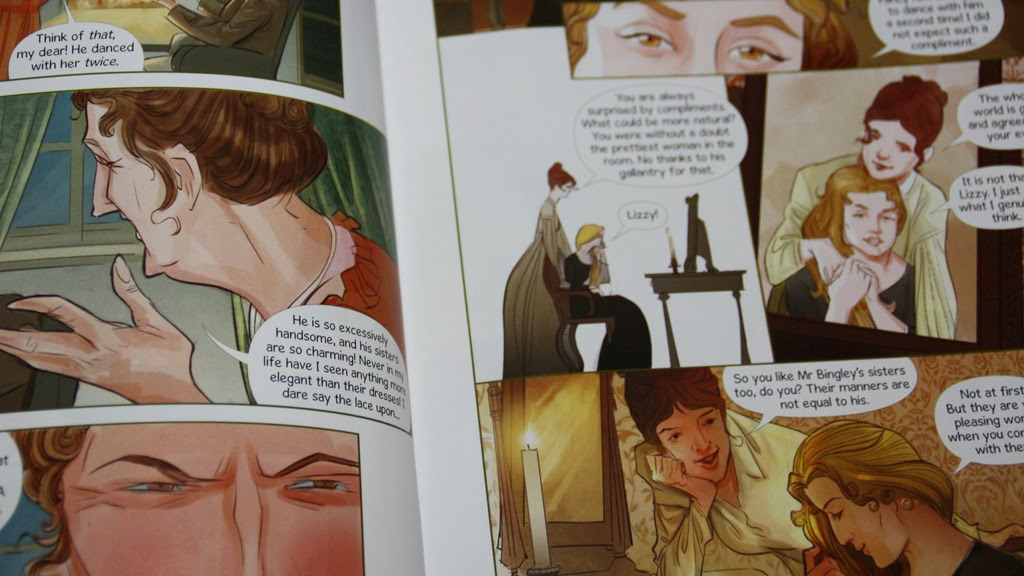
Adaptations of works like Pride and Prejudice, Moby-Dick, and The Great Gatsby have brought these classics to a modern audience, allowing readers to experience the stories in a fresh and visually compelling way.
Comics in Art
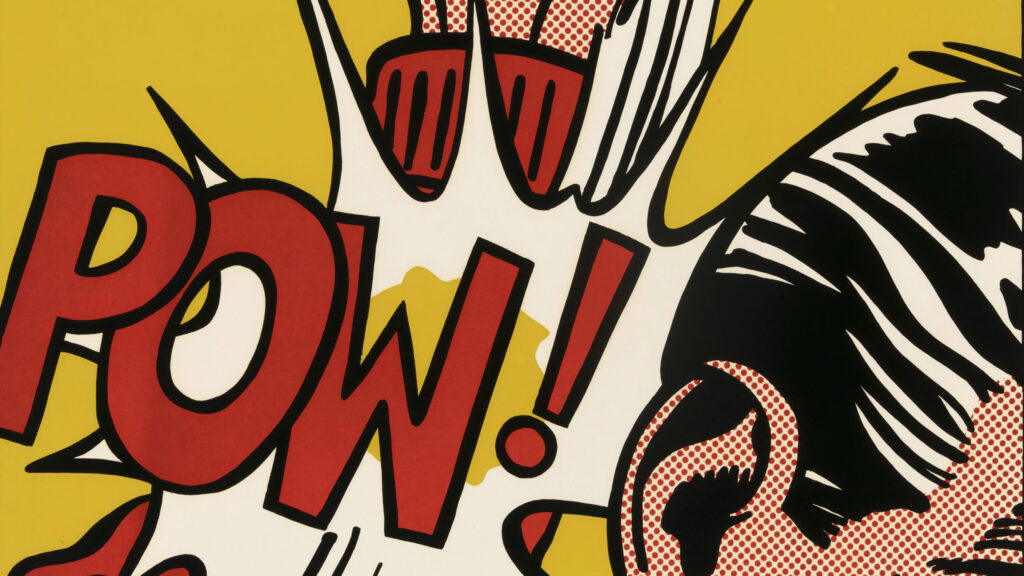
The influence of comics on the art world is undeniable.
Artists like Roy Lichtenstein drew inspiration from comic book imagery, using techniques like Ben-Day dots and bold outlines to create pop art masterpieces.
Street artists have also embraced comics as a source of inspiration.
The works of artists like OSGEMEOS and KAWS often feature characters reminiscent of comic book aesthetics, merging street art with the visual language of comics.
This fusion of high art and popular culture challenged traditional notions of what constituted art, paving the way for the pop art movement.
Moreover, the comic book medium itself is an art form, combining visual storytelling with intricate illustrations.
Comic book artists, such as Jack Kirby, Steve Ditko, and Neal Adams, have elevated the medium, pushing the boundaries of visual storytelling and contributing to the rich tapestry of pop culture.
Comics in Film and Television
Comics have had a profound impact on the film and television industries.

Early Days
The journey of comic book characters from print to screen began modestly, yet its cultural reverberations are anything but humble.
The 1950s saw the emergence of Superman on black-and-white television, with George Reeves donning the iconic cape in “Adventures of Superman.”
This classic show didn’t just bring the Man of Steel into living rooms, but marked the beginning of a symbiotic relationship between comics and screen media.
Audiences now had a visual and dynamic representation of the heroics sketched on paper, and the ethos of hope embodied by Superman echoed through a post-war America.
The 1960s further cemented this relationship with the whimsical and colorful rendition of Batman, featuring Adam West.
This show, with its onomatopoeic graphics and campy humor, was a stark contrast to the more serious tone of its comic book counterpart.
It showcased the versatility and appeal of comic book characters, allowing them to traverse through varying tones and mediums.
The Adam West Batman was a cultural phenomenon, bringing a lighter, playful aspect of comics to the forefront, and engaging audiences in a communal viewing experience that transcended age groups.
This era of experimentation and adaption laid a foundational stone for the broader integration of comic narratives in television and movies.
The early adaptations showcased the vast potential of comics as a form of storytelling capable of morphing to fit the celluloid mold, and vice versa.
The journey from the simplistic, black-and-white portrayal to the technicolor extravagance, mirrored the evolving societal dynamics and appetite for heroism in a changing world.
This early period of crossover sowed the seeds for the pop culture behemoth that comic adaptations have become today, with every leap and bound on screen tracing back to these modest yet impactful beginnings.
70s-80s
The success of superhero films like 1978’s Superman and Batman in 1989 laid the foundation for the modern era of comic book adaptations.
Comics have become a treasure trove of source material for Hollywood.
The transition from comic book to silver screen has allowed these characters and stories to reach an even wider audience, cementing their place in pop culture.
MCU
The Marvel Cinematic Universe, which began with Iron Man in 2008, has become a global phenomenon, with interconnected storylines and beloved characters captivating audiences worldwide.

This interconnected universe of films, inspired by various Marvel Comics, has redefined the way we consume superhero stories.
Characters like Iron Man, Captain America, and Thor have become household names, and the MCU has set a new standard for blockbuster filmmaking.
Nolan’s Batman
Christopher Nolan’s The Dark Knight Trilogy brought Batman to a new level of cinematic prestige.

Nolan’s gritty and realistic take on the character, portrayed by Christian Bale, revitalized the superhero genre and demonstrated its potential for exploring complex themes.
It’s not just the major publishers that have made their mark in Hollywood.
Indie Comics on Screen
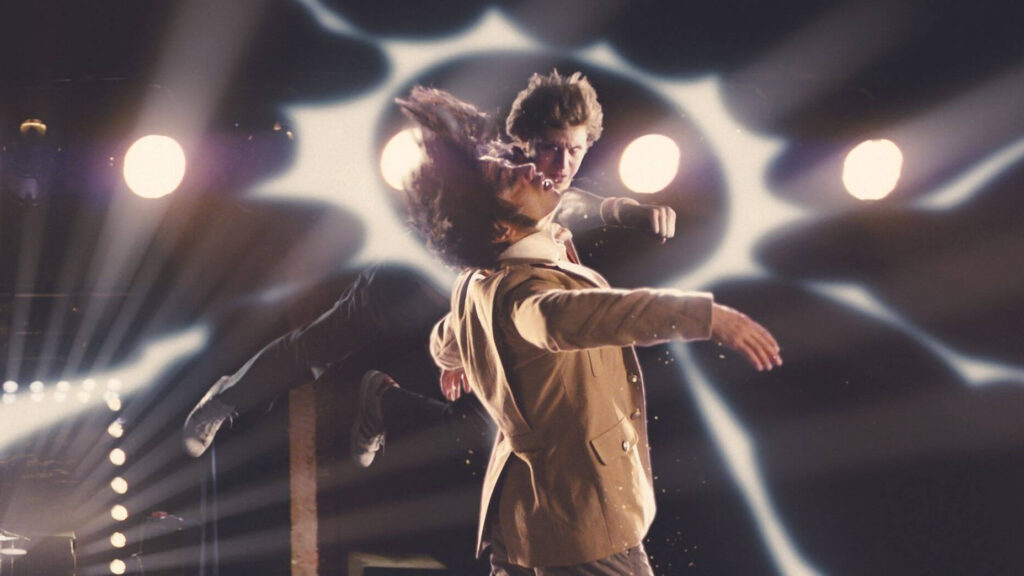
Independent comics like Sin City and Scott Pilgrim vs. The World have found success on the big screen, showcasing the diversity of storytelling within the medium.
2000s TV Adaptations
Television has also embraced the comic book medium, with shows like The Walking Dead, Arrow, and The Boys becoming cultural sensations.

These adaptations have expanded the reach of comics, introducing new audiences to the rich storytelling and diverse characters within the medium.
Comics in Fashion and Merchandise
Comics have influenced not only the entertainment industry but also fashion and merchandising.
The iconic imagery of superheroes and villains has permeated popular culture in various forms.
Iconic logos, like the Superman “S” or the Batman symbol, have become fashion statements in their own right.
Superhero-themed clothing and accessories have become staples of popular fashion.
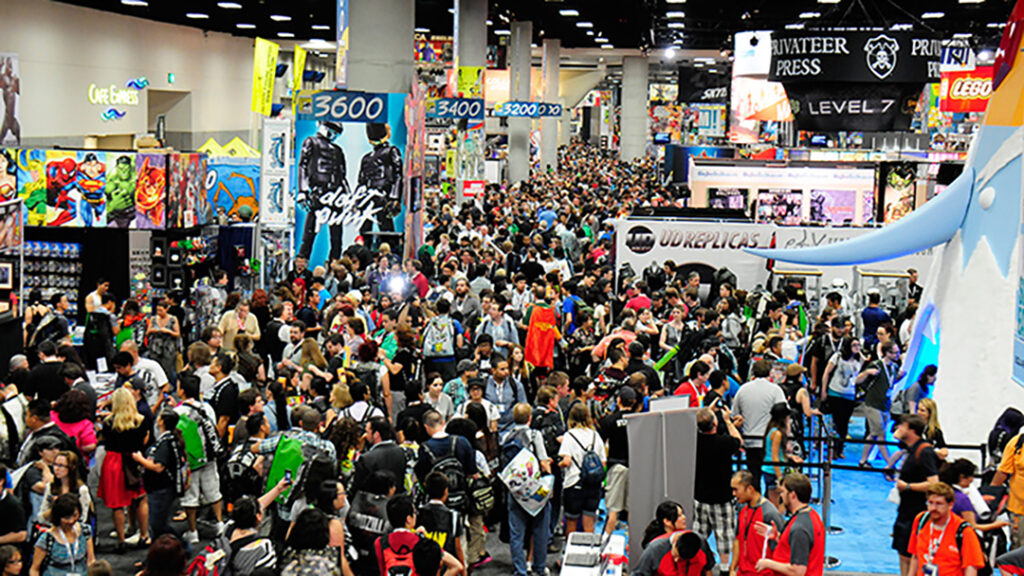
T-shirts, hoodies, and even high-end designer collaborations have featured beloved characters and logos.
Comic book-inspired clothing and accessories are a staple in the fashion industry, with superheroes and supervillains serving as muses for designers.
Additionally, the merchandising of comics has reached unprecedented levels.
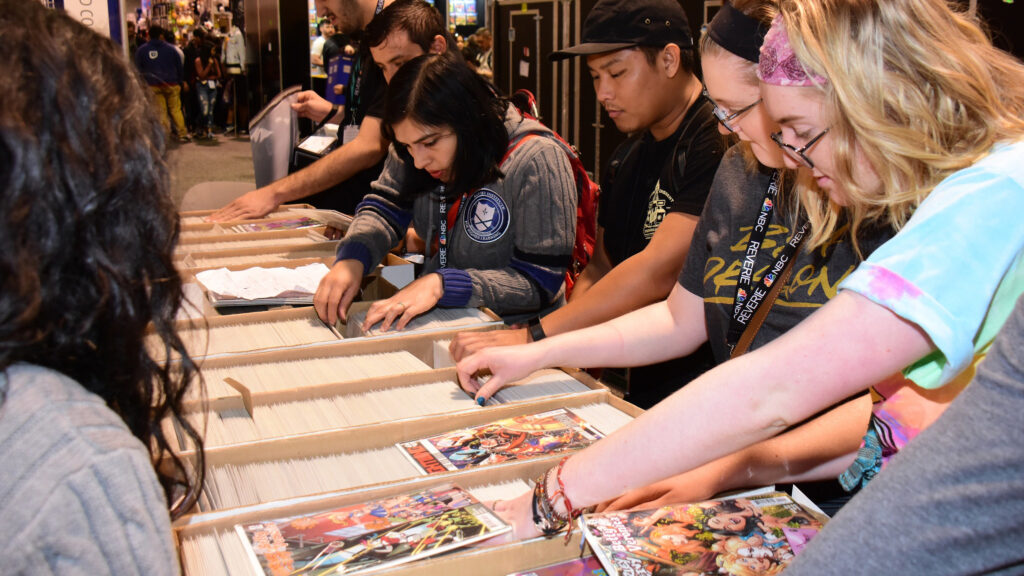
Comics have spawned a vast array of merchandise, from action figures and collectible statues to lunchboxes and bed sheets.
These products generate substantial revenue, demonstrating the enduring popularity of comic book characters and their ability to shape consumer culture.
Conclusion
Comics have left an indelible mark on pop culture, influencing literature, art, film, television, fashion, and merchandise and shaping our society in profound ways.
From their humble beginnings as single-panel cartoons to the global phenomenon of superhero movies and webcomics, comics have evolved and adapted to the changing times.
They have acted as mirrors reflecting the concerns and aspirations of society, advocating for social change, and providing a source of escapism and inspiration.
As we look to the future, comics will undoubtedly continue to play a crucial role in shaping popular culture, pushing boundaries, and telling stories that resonate with readers of all ages and backgrounds.
Comics will undoubtedly continue to champion diversity and inclusion.
The industry is making efforts to reflect a more diverse and representative world in its characters and creators, ensuring that comics remain relevant to a broader audience.
This diversity of storytelling will continue to broaden the appeal of comics.
Comics are not just a form of entertainment; they are a cultural force that continues to captivate and inspire.

